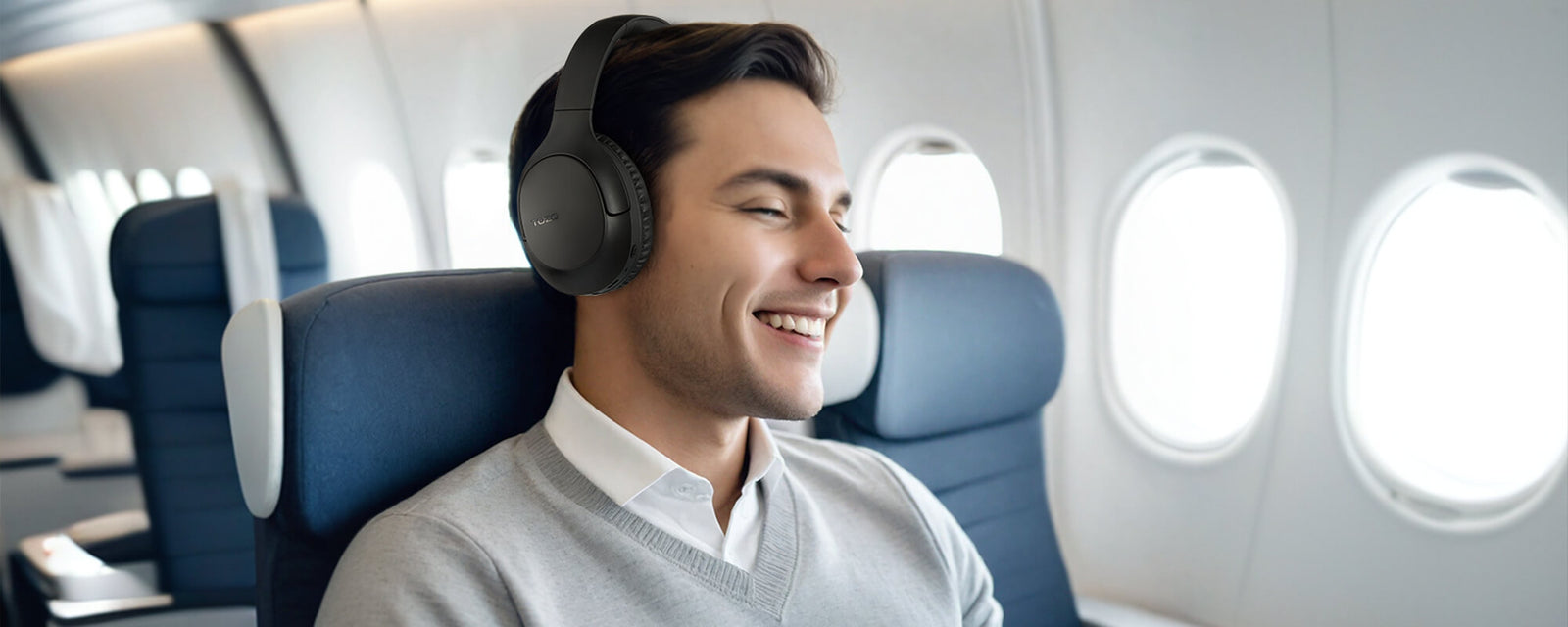The headphone first came into existence about 130 years ago with its humble beginning as a single speaker held to the ear. It quickly developed into its headset format as telephone operators needed to have their hands free to connect callers to one another. The US military also played a role in their design and made improvements along the way. However, its design changed little until the late 1950s when John Koss, founder of the Koss Corporation, developed a pair of stereophonic headphones that featured an over-the-ear design.
The over-the-ear design remained the standard until the introduction of the Sony Walkman in the late 1970s, which had a lightweight and spare on-ear headphone design. Consumers flocked to the on-ear design for its comfort, feel, and sound quality. Since then, on-ear and over-ear headphone styles have gained their fans, each with advantages and disadvantages. Read on to learn more about over-the-ear headphones vs. on-the-ear.
What Do Over-Ear Headphones Mean?
Over-ear headphones are a set of headphones with oval or round cups that completely enclose the ear and a band that goes over the head to connect them together. Each cup has a small speaker inside of it to deliver sound. They have a cushion around the edge of the cup to make them comfortable and create a seal against your ears.

Sometimes the band is cushioned as well, and sometimes it's not. The interior of the cups is semi-hollow to keep the speakers from touching your ear and help with the acoustics. This design also creates passive noise cancelling because the ear is fully enclosed under the cup.
What Do On-Ear Headphones Mean?
On-ear headphones have a design that's similar to over-the-ear, but are smaller and don't enclose the entire ear. They also use cushions around the cups for comfort and to keep sound from "leaking" out. On-ear headphones have to use active noise cancelling as they don't cover the entire ear. The ear is not a smooth surface, and getting a complete sound seal with an on-ear set of headphones is impossible.

Over-Ear Headphones vs. On-Ear Headphones
Over-ear and on-ear headphones have a similar appearance, and both function in the same way, but they have a key difference when it comes to how they cover the ear. This directly affects how they deliver sound and provide noise cancelling, features that can make you choose one style over the other.
Key Differences
| Over-the-Ear | On-Ear |
|---|---|
| Full ear coverage | Smaller than over-the-ear |
| Passive noise cancelling | Active noise cancelling is necessary |
| Harder to carry | Portable |
| Longer battery life (for battery-powered models) | Smaller cups |
| Generates excess heat | Suffers from sound leakage |
How to Choose the Right Headphones?
Ask yourself where you think you'll be using the headphones the most, and what you need from their use. You may prefer a pair of over-the-ear headphones with active noise cancelling to tune out the noise from an office setting or to immerse yourself in the ultimate listening experience in your home office. An on-ear pair works best for settings where you need to have some audio awareness of your surroundings, such as an airport or watching your kids play at the park.
Comfort Considerations
Comfort is another consideration, especially if you have sensitive skin and hearing. On-ear designs are easily adjusted and have airflow to keep you cool and comfortable, while over-the-ear block airflow on purpose and deliver sound more directly to your eardrums.
On-Ear Headphones
On-ear headphones tend to cost less due to the fact they use less material in their construction and are more portable than over-the-ear designs. It's easier to pack a pair of on-ears into a carry-on or laptop bag than over-the-ear. You can also wear on-ear headphones for the purpose of being able to pick up external noise in settings where that's important.
Over-Ear Headphones
Over-ear headphones deliver the best sound fidelity and immersive listening experience. Users can also fine-tune the sound with an equalizer to get the tones, depths, and delicacy they seek. The design is also more cartilage-friendly in that they don't crush the outer ear and lay smoothly against the side of the head.
FAQs about Over-Ear and On-Ear Headphones
Can I use over-ear headphones for workouts?
Yes, you can use over-ear headphones for working out, but you might find that they're bulky and make it more difficult for you to perform a routine. On-ear headphones are a good alternative, especially if you want to block out sound, but don't want the bulk of an over-ear headset.
Which type is better for sleeping?
It depends on your preferred sleeping position. If you sleep on your back, you'll find that there's little difference in terms of feel when it comes to over-the-ear headphones vs. on-the-ear. However, if you're a side sleeper, both types are going to be uncomfortable to wear, and you'll be better off with a headphone headband instead.
Which type is better for gaming?
Both types work for gaming with the considerations coming down to comfort and immersion. If you want to pick up every last sound and melody to create a fully immersive gaming experience, go with over-the-ear headphones. When heat build-up is a concern, use on-ear headphones with noise cancelling to stay cool and dry while still picking up on what's being said or played.






























